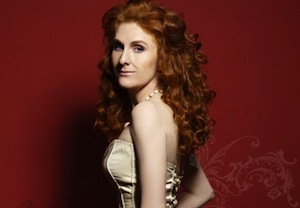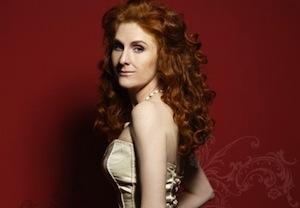
There are those who claim that San Francisco has become like the next morning’s unfinished glass of scotch — a city become flat, boutiquish, and ever more provincial. And perhaps, also, less and less the home of true characters …
Whether or not that’s true, if you wonder what the city was like in its golden age, the San Francisco Symphony is about to offer a vivid reminder of a place still hot to the touch. Music Director Michael Tilson Thomas’ program, filled with his inimitable “teachable moments,” is called “Barbary Coast and Beyond, Music From the Gold Rush to the Panama-Pacific Exposition.”
The Symphony, celebrating its centennial season, will give three different performances featuring no fewer than 20 works, including music by Meyerbeer, Gottschalk, Wieniawski, Offenbach, Kreisler, Wagner, Sousa, Bellini, Saint-Saëns, and others.
“The focus,” says John Mangum, the Symphony’s director of artistic planning, “has been on recapturing a sense of the city’s early cultural identity and what drew the great entertainers of the day here.”
The San Francisco Symphony is about to offer a vivid reminder of a place still hot to the touch.
If you picked just one of those entertainers as representative of the city — and you think of Lola Montez, Stephen Massett, or Eliza Biscaccianti — you might choose Adah Isaacs Menken (1835–1868), an actress, poet, and ballet dancer from New Orleans whose incarnations on the way to San Francisco included “Queen of the Plaza” in her time in Havana. She also appeared on Broadway. Among her reviews: “She is delightfully unhampered by the shackles of talent.” But her tour de force was in Baghdad by-the-Bay (San Francisco, for newcomers), where she starred as Mazeppa, in a show based on Lord Byron’s poem. She gave it her own twist, and in the climactic scene was strapped to a horse, appearing to be nude, and led offstage, followed by leering captors.
James M. Keller, program annotator of both the New York Philharmonic and the San Francisco Symphony, is an expert on music from this period and chose the components for the program.
“The city [in the mid-1800s] offered an intense mixture of cultural experiences.” – James M. Keller
“On the one hand,” he remarks, “here are the people of San Francisco striving to build culture, and in the process build a music industry, and so you have this parade of famous European pianists and violinists coming through town. A recital would include a Beethoven sonata, as well as variations on popular songs.
“On the other hand,” he continues, “remember that the city [was] a capital of low life, with dives, burlesque halls, and melodeons, which referred to organs that performers brought in suitcases to bars that had no pianos. The entertainment, which included ‘blackface’ shows, was often jaw-droppingly distasteful by today’s standards, but the point is that the city offered an intense mixture of cultural experiences.”
Keller has curated an exhibition now at the Society of California Pioneers in San Francisco, kitty-corner from Moscone Center, which celebrates this period from 1848 to 1930. The focus is on decorative sheet music and musical memorabilia, and lasts through the end of the year.
Asked how an audience should approach the Barbary Coast concerts, Keller replied, “I cannot think of another art form that brings back the past as vividly as popular music. You read a novel or a poem or look at a painting and of course you feel something, but there’s nothing like a popular song to bring back the feeling and style of an era. For those four or five minutes that you listen to one of these songs, it really is 1870.”

